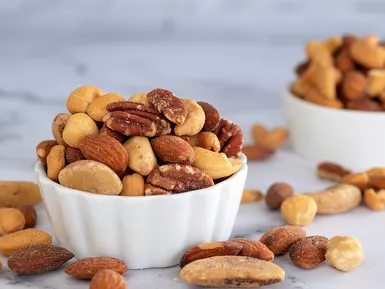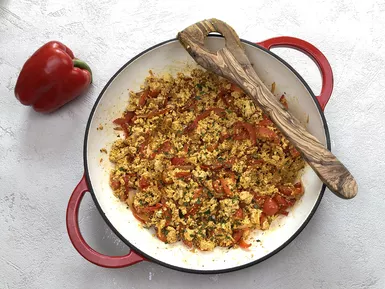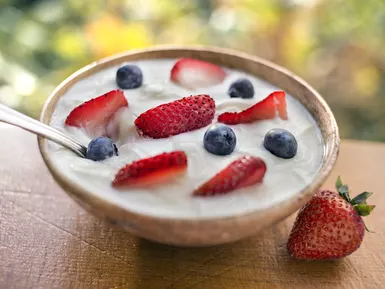400 Calories Burned: 7 Enjoyable Activities for Safe, Effective, and Sustainable Weight Loss

400 Calories Burned: 7 Enjoyable Activities for Safe, Effective, and Sustainable Weight Loss
Embarking on a weight loss journey often brings up the question: "How much do I really need to exercise?" While every body is unique, creating a consistent calorie deficit is a cornerstone of shedding unwanted pounds. Burning an extra 400 calories through physical activity most days can be a fantastic way to jumpstart your progress. According to Harvard Health's widely cited 3,500-calorie rule (approximately the number of calories in one pound of fat), this could translate to shedding around 0.4kg (nearly 1lb) of fat per week when combined with mindful eating!
But which activities are most effective, safe, and enjoyable, especially if you're a beginner or at an intermediate fitness level? Let’s explore some science-backed, practical options to help you reach that 400-calorie mark and feel great doing it.
Why Aim for 400 Calories? The Science of Energy Expenditure Explained
Your body is constantly burning calories, even at rest, through its basal metabolic rate (BMR). Physical activity and even the process of digesting food (thermic effect of food) add to this daily burn. Exercise significantly amplifies the 'physical activity' component of your total energy expenditure.
The American Council on Exercise (ACE) notes that, on average, a 70kg (approximately 154lb) person can burn around 400 calories through moderate-intensity activities in about 30 to 60 minutes, depending on the specific activity and effort level. Creating this consistent daily deficit, ideally paired with balanced and nutritious eating, is what drives sustainable and healthy fat loss over time. It’s about creating a gentle nudge in your energy balance, not an extreme overhaul.
7 Practical and Engaging Ways to Burn Approximately 400 Calories
Here are some fantastic, accessible options to get you moving and feeling energized (calorie burn estimates are approximate for a 70kg/154lb person; your actual burn may vary based on weight, intensity, fitness level, and other factors):
1. Brisk Walking (Pace: 3.5–4 mph / 5.6–6.4 km/h)
- Approximate Time: 60 minutes
- Why it's great: Ideal for beginners and those seeking a low-impact option, walking is incredibly accessible – you can do it almost anywhere, anytime! Research from the National Institutes of Health (NIH) consistently shows that 30+ minutes of brisk walking per day significantly improves heart health and enhances your body's ability to oxidize (burn) fat.
- Make it more challenging: Increase your pace, find routes with gentle inclines or hills, or incorporate short bursts of faster walking.
2. Cycling (Moderate Pace: 12–14 mph / 19–22.5 km/h)
- Approximate Time: 45 minutes
- Why it's great: Cycling is wonderfully joint-friendly and incredibly versatile. Whether you prefer a stationary bike at home or exploring scenic outdoor paths, it effectively targets your leg muscles while providing a fantastic cardiovascular workout. The National Academy of Sports Medicine (NASM) confirms that moderate cycling elevates your heart rate effectively without undue strain on your joints.
- Perfect for: Commuters, outdoor enthusiasts, or anyone looking for a lower-impact cardio boost.
3. HIIT (High-Intensity Interval Training)
- Approximate Time: 20-25 minutes (including warm-up and cool-down)
- Why it's great: HIIT involves short, intense bursts of exercise (e.g., 30 seconds of sprints or jump squats) followed by brief recovery periods (e.g., 30 seconds of walking or rest). This method triggers EPOC (Excess Post-exercise Oxygen Consumption), often called the "afterburn effect," where your body continues to burn extra calories for up to 24–48 hours after your workout (ACE data).
- Getting started: If you're new to HIIT, start with shorter sessions (e.g., 10-15 minutes) and gradually increase duration and intensity. Listen to your body!
4. Swimming (Freestyle Laps at a Moderate Pace)
- Approximate Time: 40 minutes
- Why it's great: Harvard Health consistently ranks swimming as one of the top full-body workouts. It engages an estimated 80% of your body's muscles with minimal stress on your joints, making it an excellent choice for almost everyone, including those with joint sensitivities.
- Keep it interesting: Aim for steady, rhythmic laps. Mix up your strokes (freestyle, breaststroke, backstroke) to engage different muscle groups and keep your workouts fun.
5. Dance Cardio (e.g., Zumba, Aerobic Dance, or Following Online Routines)
- Approximate Time: 50 minutes
- Why it's great: Who said exercise can't be a party? The NIH has found that dance-based exercise often leads to better long-term adherence because of its inherently social, playful, and engaging nature. You don't need to be a professional dancer – just move to the music and have fun!
- Easy to access: Follow along with countless free online routines or join a local class to stay motivated and connect with others.
6. Stair Climbing (Consistent Ascending and Descending)
- Approximate Time: 30 minutes (e.g., consistently climbing 6 flights of stairs and descending, repeated for about 10 sets, or using a stair-stepper machine)
- Why it's great: Stair climbing is a surprisingly potent, often overlooked, calorie burner! NASM reports that stair climbing can torch an impressive 9–11 calories per minute, all while effectively building strength in your legs and glutes.
- Everyday opportunity: Take the stairs at work or home instead of the elevator, or incorporate a stair-stepper machine into your gym routine.
7. Home Strength Circuits (Focus on Compound Movements)
- Approximate Time: 45 minutes (including warm-up and rest between sets)
- Why it's great: Combine bodyweight exercises like squats, push-ups (on knees is a great start!), lunges, and planks into a circuit (e.g., perform each exercise for 30-45 seconds, rest for 15-30 seconds, repeat the circuit 3-5 times). ACE highlights that building and maintaining muscle tissue is crucial because muscle burns more calories at rest than fat does. So, strength training gives your long-term metabolism a fantastic boost!
Smart Strategies to Avoid Common Pitfalls on Your Journey
- Don't Overestimate Your Calorie Burn: Many fitness trackers and apps can sometimes overestimate calories burned. For more accuracy, consider using a heart rate monitor that factors in your personal biometrics, or simply use these numbers as a general guideline and focus on consistency.
- Prioritize Recovery – It’s Not Laziness, It's Essential! Overtraining can backfire by raising stress hormones like cortisol, which can hinder fat loss and increase injury risk (NIH warns). Schedule 1–2 rest days per week, or opt for active recovery like gentle stretching or a leisurely walk.
- Remember That Nutrition is Key: Burning 400 calories is a fantastic achievement, but it won’t magically offset a diet high in processed foods or excessive calories. Pair your exercise efforts with a balanced intake of whole foods – plenty of colorful vegetables, lean protein, healthy fats, and whole grains.
Your Customized Plan: The Secret is Finding Your Fit (A Key Insight!)
The "best" exercise to burn 400 calories is ultimately the one you enjoy and can stick with consistently.
- Think about your lifestyle: Busy parents might find that two 20-minute HIIT sessions after the kids are in bed fit best. Office workers could make a habit of taking the stairs and incorporating a brisk lunchtime walk.
- Consistency trumps short-term intensity every time. Find activities that feel good for your body and fit realistically into your schedule.
Take Action Today: Your First Step Towards a Healthier You!
Ready to feel the energizing benefits of burning those 400 calories?
- Pick 1–2 activities from the list above that genuinely appeal to you.
- Start by aiming for 3 sessions per week, and gradually increase the frequency or duration as you feel stronger and more comfortable.
- Track your progress in a way that motivates you – perhaps a simple journal noting your workouts and how you felt, or a fitness app.
- Celebrate your small wins! Did you complete your planned HIIT session even when you were tired? Did you walk an extra 10 minutes? Acknowledge and appreciate your efforts.
Remember, aiming to burn 400 calories is a wonderful daily or near-daily step on your wellness journey – it's not an all-or-nothing finish line. Sustainable habits, built with patience and self-compassion, lead to lasting, meaningful results! You've got this!

5 Transformative Weight-Loss Resolutions for Success

Workout Routines & Beyond: Science-Based Weight Loss

Vitamin E and Weight Loss: Unveiling the Truth

Effective Strategies to Lose Midriff Fat for Women

8 Non-Scale Victories in Your Weight-Loss Journey

Unveiling the Ornish Diet: A Path to Sustainable Weight Loss

The Power of Social Support in Weight Loss

Personalized Weight Loss: 4 Strategies for Success

Long - Term Weight Loss: Maintaining Healthy Habits

